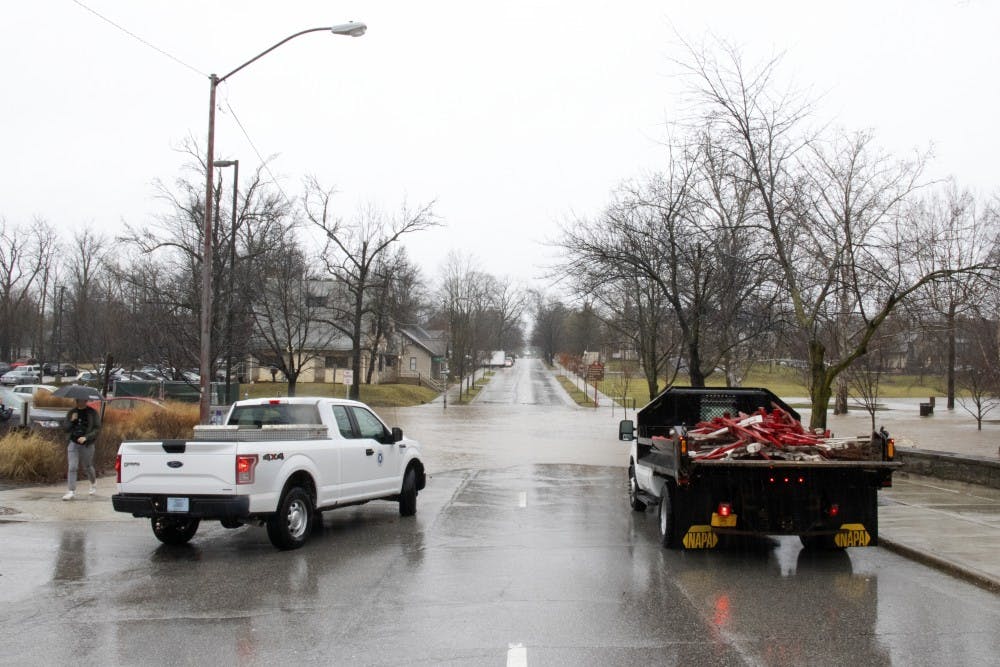Freshman Avery Anderson sat soaked from the rain in her Ballantine lecture hall Feb. 7, preparing for her first Intro to American Politics exam. But shortly before 1 p.m., when the class was supposed to start, she got a Canvas notification from her professor about a tornado warning.
“Take shelter,” it read. Class was cancelled.
IU issued a tornado warning last week to all students, staff and faculty. Although it only lasted about 20 minutes, it still disrupted the rhythm on campus.
But for Anderson, the tornado warning had expired by the time the class would have begun. Anderson decided to walk over to the Indiana Memorial Union to wait for her roommate to go home.
“When we get warnings, it doesn’t really bother me,” she said.
The university issues severe weather notifications based off of warnings from the National Weather Service in Indianapolis, according to an IU-Notify email. Sometimes the warnings indicate an immediate threat, and sometimes they do not.
Cody Kirkpatrick, IU lecturer in the Department of Earth and Atmospheric Sciences, said the science of tornado warnings is imperfect. About seven out of ten tornado warnings issued by the National Weather Service are false alarms, according to the Weather Channel.
Kirkpatrick has a history of disagreeing with IU’s severe weather alert system. This time he said the university issued the warning correctly. Yet Bloomington was never necessarily in any danger.
At first it looked like the city was in the path of the storm, he said. But after about 10 minutes, the radar showed the storm moving well away the city.
“We could have gotten people back to their daily routine a little bit faster,” he said.
Regardless of whether the warning indicates a real threat, Kirkpatrick said professors should keep class in session instead of cancelling. Otherwise, students are bound to leave the building and walk around outdoors.
“Am I about to turn my 100 students out into the wild to walk from here to Kilroy’s with a tornado potentially bearing down on campus?” he said.
Kirkpatrick said he was having lunch at Chipotle when the tornado sirens blared through the city. The cashier looked worried and looked for the manager for instruction, he said.
“I felt compelled to stand up and say, ‘It’s okay, everybody is fine, let’s just have lunch,’” he said.
The real danger Thursday was not tornadoes, Kirkpatrick said, but flooding.
He said threats like flooding from heavy rains and lightning are not taken as seriously as they should be.
“Those sorts of risks tend to be forgotten by people sometimes,” he said. “They don’t cause the sirens to go off. They don’t cause us to check our phones.”
In any inclement weather, Kirkpatrick said to trust the experts, whether that be the National Weather Service or a local TV meteorologist. The warnings may not be perfect, he said, but it is better to be safe than sorry.
Kirkpatrick said he likes to think of tornado warnings like an insurance policy. Individuals don't necessarily need them all the time, but the one time something bad does happen, it could save lives.
IU spokesperson Chuck Carney said if IU issues a warning, students are expected to follow it until it expires, even if they think there is no real danger.
He said students, staff and faculty should refer to the Protect IU emergency planning page, which includes steps on how to update personal IU-Notify settings and advice on who to contact in an emergency.




